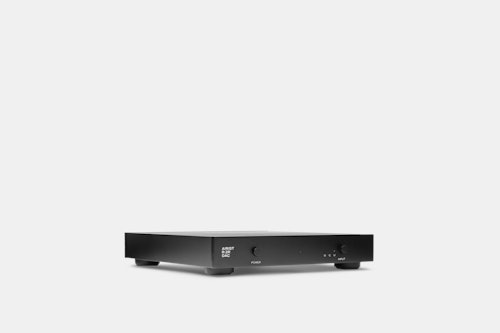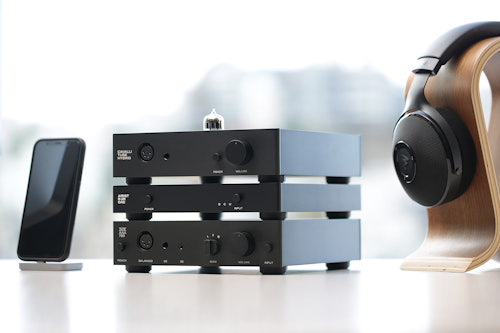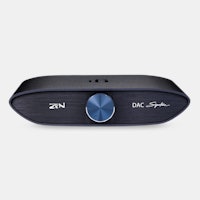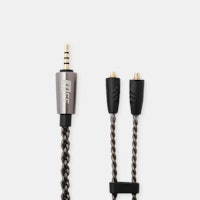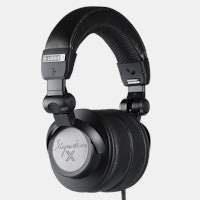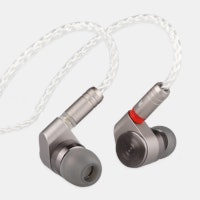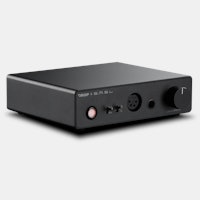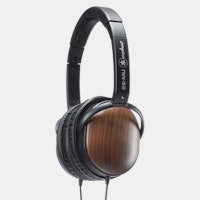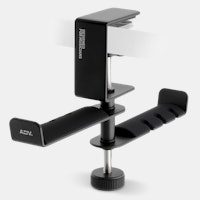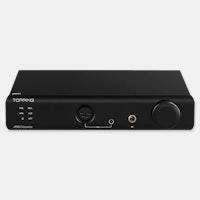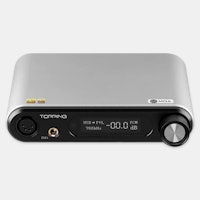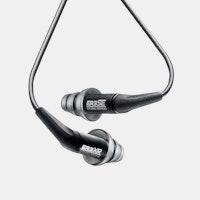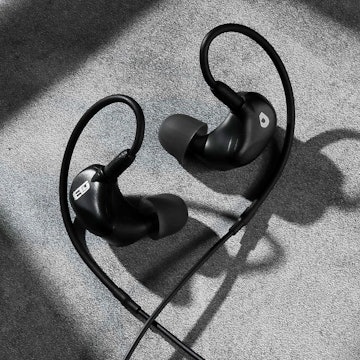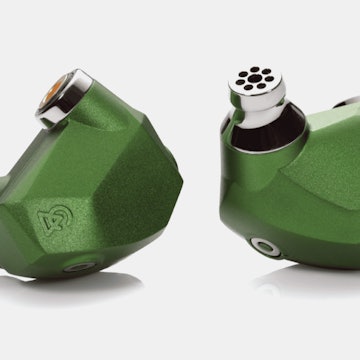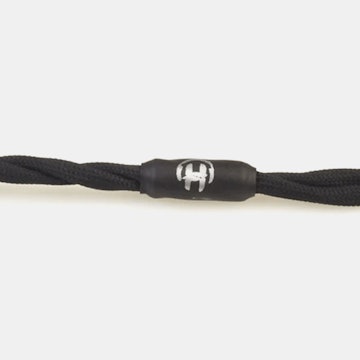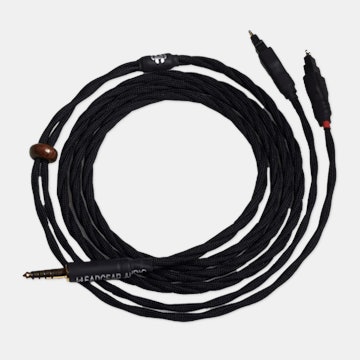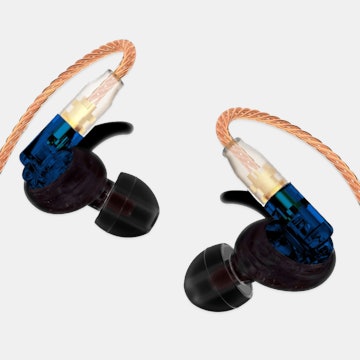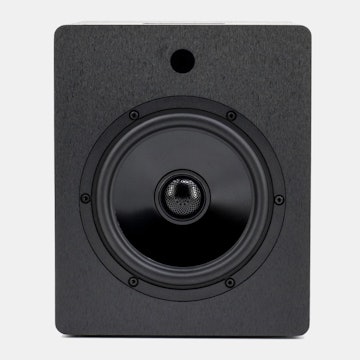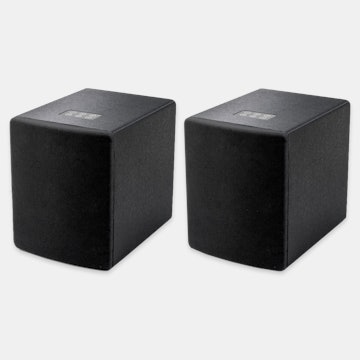Click to view our Accessibility Statement or contact us with accessibility-related questions



















.jpg?auto=format&fm=jpg&fit=crop&w=30&h=30&dpr=1&q=70)





Massdrop x Airist Audio R-2R DAC
Massdrop x Airist Audio R-2R DAC
bookmark_border
Where's the price?
To negotiate the best possible price for our customers, we agree to hide prices prior to logging in.
7.4K requests
·
1000 Sold
·
Free Returns in USA
Product Description
Featuring discrete resistor ladder technology at an unheard-of price, the Massdrop x Airist Audio R-2R DAC is one of our most requested and anticipated products this year: a DAC with the looks and quality to match our new lineup of amps. An older technology that’s been making a comeback, R-2R is known to produce rich, warm, natural sound and can have benefits in spatial awareness and staging Read More

search
close
Sort by: Top Conversations
keyboard_arrow_down
sosolar
253
Jun 5, 2018
is the module a direct copy from my 2016's work?
I dont remember I have legally authorized anyone to do so.
And comments available here:
http://bbs.hifidiy.net/forum.php?mod=viewthread&tid=1192897
http://bbs.hifidiy.net/forum.php?mod=redirect&goto=findpost&ptid=1149252&pid=26334919
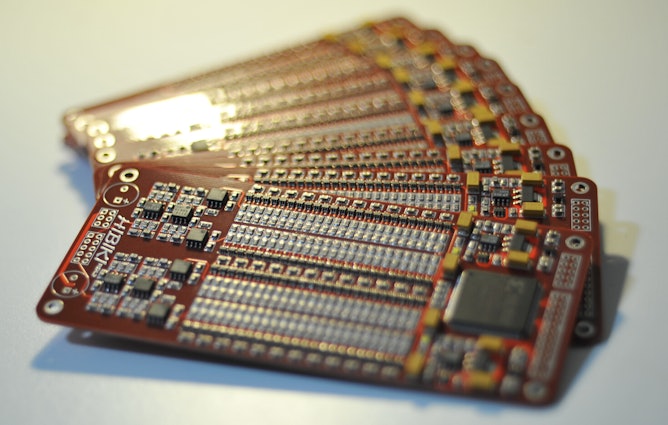




Artismo
461
Oct 13, 2019
sosolarRelease a DAC or develop one with an audio company. I will buy from you.

CEE_TEE
3480
Jun 6, 2018
John Grandberg/project86
https://www.head-fi.org/threads/massdrop-x-airist-audio-r-2r-dac-a-discrete-resistor-ladder-dac-for-350.881315/#post-14282853
“Massdrop’s Airist R-2R DAC offers massive performance at a relatively low price ... It focuses on the fundamentals and makes beautiful, natural sound, much the same way my favorite vintage R-2R DACs did ... For offering a musically satisfying performance, with amazingly pure treble and accurate imaging, the Massdrop Airist R-2R DAC is a clear winner. Factor in the ability to upgrade it to an almost shockingly high level of performance, and you can see why it earns a very strong recommendation.”
Head-Fi.org, InnerFidelity.com, Darko.Audio
Jaytal
174
Dec 26, 2018
Guilt by association is an extremely valid concept. You choose to front a community that you partake in.

lupi900
28
Nov 9, 2019
Really love how ASR users contradict there weak arguments. I really find it funny a science site has to ignore that +5 people will different views on how gear sounds. Not to mention nothing on that site is valid after the owner used a broken Schitt amps to go how they measure bad. lol

Will
8470
Chief Product Officer
Jun 6, 2018
Hey Friends,
Here’s a summary of the top questions and answers from our pre-launch discussion. This covers the most frequently-visited topics from the first couple of hundred discussion posts.
Q: What is R-2R and why do I care?
A: A different way to process digital to analog conversion, which many audiophiles prefer for it’s characteristic “sweetness”.
Q: Is this different from the Schiit Audio Multi-Bit DACs?
A: Different species, same family. The Multibit DACs use chips with integrated resistor ladders. The RDAC uses discrete resistor ladders.
Q: Is the RDAC a copy of the Hibiki DAC?
A: No, the top PCB of the RDAC has a similar layout, but these projects are unrelated, read more about RDAC development here: https://www.massdrop.com/buy/massdrop-x-airist-audio-r-2r-dac/talk/2100186
Q: Why use discrete resistors instead of a resistor array?
A: Integrated resistor arrays are not inherently better or worse than discrete resistors. In the context of the RDAC, the price point made it unrealistic to source sufficiently wide and precise integrated arrays.
Q: What are the main differences between the RDAC and other popular R-2R implementations?
A: We've pared it down to the core elements that make R-2R DACs sound great, focusing on a discrete ladder implementation over the more popular integrated implementation.
Q: Does this DAC “upsample” it’s input? Is it “NOS”?
A: The RDAC up-samples the input but the digital-to-analog conversion does not oversample. Thus, it can be considered a “no-oversampling” DAC even though there is “upsampling” at the digital inputs (with an FIR filter to reduce noise through input processing before D-to-A conversion).
Thanks for your interest in this product and don’t hesitate to join the discussion below!

roarWolfy
144
Jun 9, 2019
If they can fix the early issues with the dac I would love to see these in a more expensive unit and have them make even more improvements. I would definitely pay more for more features like this.

RockyMountains
478
Jun 10, 2019
The whole sosolar fiasco had absolutely nothing to do with patents.
(Edited)
TheGame21x
100
Jun 4, 2018
I want this. I want this right now. Between this and the CTH and the THX AAA 789, it won't be long until my entire audio setup has a Massdrop logo on it somewhere. :D

RockyMountains
478
Jun 12, 2018
Yes, we've been through the whole 'truth' thing and how only you can recognize the truth which flows from your Messiah Amir.
Jimster480 : "Its actually likely the truth, you really don't understand the massive amount of cash that these guys are making from this insane corruption. The lack of transparancy, the inconsistency of responses and the childish manner of which information has unfolded in the last year especially shows that there is foul play going on in regards to Schiits hand in the proverbial pot so to speak. From how I was treated by administrators when I asked them direct and honest questions to how I was discredited when I didn't even claim any "credit" in the first place.... Whether Jason has control of Jude's account or not, his childish rage and inconsistency in dealing with anything related to schiit tells me and many others around the net (there are several posts on chinese forums discussing schiit and corruption on HeadFi aswell as SBAF) that they are controlling the scenario via those two forums and building an army of fan's through manipulation of information."
So it's Jude has the childish rage issues? All the other websites or companies are building an army of angry fans built up around misinformation? Too much irony in this thread, keep magnets away.
Jimster480 : "Its actually likely the truth, you really don't understand the massive amount of cash that these guys are making from this insane corruption. The lack of transparancy, the inconsistency of responses and the childish manner of which information has unfolded in the last year especially shows that there is foul play going on in regards to Schiits hand in the proverbial pot so to speak. From how I was treated by administrators when I asked them direct and honest questions to how I was discredited when I didn't even claim any "credit" in the first place.... Whether Jason has control of Jude's account or not, his childish rage and inconsistency in dealing with anything related to schiit tells me and many others around the net (there are several posts on chinese forums discussing schiit and corruption on HeadFi aswell as SBAF) that they are controlling the scenario via those two forums and building an army of fan's through manipulation of information."
So it's Jude has the childish rage issues? All the other websites or companies are building an army of angry fans built up around misinformation? Too much irony in this thread, keep magnets away.

porntipsguzzardo
97
Oct 26, 2019
Locked
Absolutely brutalized on Audio Science Review. This is a piece of junk. Everyone who bought it was screwed. Sorry, guys.

LuckyLuke575
561
Nov 30, 2019
You need to get off here and seek help from a mental health professional.

CEE_TEE
3480
Jun 4, 2018
You listen to recordings all day- music on your phone, dialog on television, radio in your car, etc. With rare exception, these are digital recordings converted to an analog signal played over speakers or through your headphones. Every sound you’re hearing has been processed through a DAC, and all of those DACs are one classification of DAC called “delta sigma”.
The Delta Sigma DAC was a brilliant invention because it doesn’t require many parts (making it cheap to manufacture), and it is easy to fit into circuit designs where Digital to Analog conversion is a necessity (but not the focus).
This type of DAC, which colors every recording you hear, is based on a process that simplifies the signal (losing some of the detail) and then rebuilds the signal (restoring detail). Similar to freeze dried food however, the reconstituted sound isn’t exactly the same. Delta Sigma DACs change the format of the signal and create extra noise during processing which is then filtered out, you don’t get the recording exactly as it was.
A second type of DAC exists, R-2R, a fundamentally different approach to digital to analog conversion. Instead of simplifying and reconstituting, this DAC maintains the detail of the recording throughout the process, at the expense of parts and space. R-2R DACs have been around since the 1980’s but the execution was historically poor, very expensive, or both. To do this style of conversion, you need dozens of very tightly toleranced resistors, and manufacturers simply couldn’t achieve those tolerances in the 1980s. R-2R makes for a better sound, but it takes so much space it requires it’s own box and precision (expensive) parts that are hard to make. It should come as no surprise that this technology was abandoned for many years.
In 2016, we met William Tse of Airist Audio, and began a conversation about R-2R DACs. Our goal was to take this beneficial technology, build it into a reasonable form factor, executing a no-compromise R-2R DAC at a price that would reach the majority of our audiophile community.
Two years later, the result is the RDAC. The method used is called sign-magnitude representation. On each channel we have 2 ladders, one dedicated to the positive side of the waveform, the other for the negative side. The purpose of this is to involve a smaller number of changing bits between positive and negative, without introducing too much bias.
Our Partner: Airist Audio Some of you know Airist Audio for their Heron 5 amplifier that has been sold here on Massdrop. The Heron 5 was their first product and a statement that you can make a great-sounding solid state amplifier by paying attention to phase (timing) performance rather than just frequency response (bass-to-treble linearity). They had a different angle to amplification and a clear goal which they achieved. Descriptions of the Heron 5 are never “sterile” or harsh, but warm, natural, and “involving”. The design and execution of the Heron 5 led us to ask Airist about taking on our challenge of making an entry-priced R-2R DAC with the sound and performance of much higher-cost units.They understood what we hoped to offer, had clear ideas about how to approach the design, and believe in what Massdrop is trying to do. (FYI: One of the reasons Airist Audio hasn’t yet followed up the Heron 5 with another product is because part of the team was working on tackling global health issues…turns out that similar technology is helpful in solving audio-related problems as well as tackling disease in populations. Another reason is that they were working on this challenge.)
Community Feedback/Community Validation Great gear makes your music sound the best you have ever heard it. Or, great gear just gets out of the way and you forget about the gear and just listen to the music. We’ve gotten several RDAC units out to community members to be sure it sounds good. We’ll get some review links up and ask them to post here. Some early prototypes were circulating as far back as 2016. In that period of time, we have changed the inputs, the input selection switch, parts used on the PCBs, the form factor of the entire thing (to stack and look good with our amps), along with the power supply voltage & regulation.
Technical Chat William Tse of Airist Audio will have limited availability due to his current projects but will try to be online to answer questions here in discussion for a few days. We will then collect questions throughout the drop and relay the top questions to him in an additional First Purchaser Q&A after the drop ends.
While you can't change the Sigma Delta DACs that are already in your phone and all the various equipment all around you, now you have a choice that you can make for your audio system that won't cost you thousands of dollars.
This is an important launch for us, a high-level affordable separate DAC of great sound quality in a matching chassis to accompany our recent amplifier launches.
We’re excited for pics of your stack and to read if people stay up "way too late” listening to their rigs. :)
Two years later, the result is the RDAC. The method used is called sign-magnitude representation. On each channel we have 2 ladders, one dedicated to the positive side of the waveform, the other for the negative side. The purpose of this is to involve a smaller number of changing bits between positive and negative, without introducing too much bias.
Our Partner: Airist Audio Some of you know Airist Audio for their Heron 5 amplifier that has been sold here on Massdrop. The Heron 5 was their first product and a statement that you can make a great-sounding solid state amplifier by paying attention to phase (timing) performance rather than just frequency response (bass-to-treble linearity). They had a different angle to amplification and a clear goal which they achieved. Descriptions of the Heron 5 are never “sterile” or harsh, but warm, natural, and “involving”. The design and execution of the Heron 5 led us to ask Airist about taking on our challenge of making an entry-priced R-2R DAC with the sound and performance of much higher-cost units.They understood what we hoped to offer, had clear ideas about how to approach the design, and believe in what Massdrop is trying to do. (FYI: One of the reasons Airist Audio hasn’t yet followed up the Heron 5 with another product is because part of the team was working on tackling global health issues…turns out that similar technology is helpful in solving audio-related problems as well as tackling disease in populations. Another reason is that they were working on this challenge.)
Community Feedback/Community Validation Great gear makes your music sound the best you have ever heard it. Or, great gear just gets out of the way and you forget about the gear and just listen to the music. We’ve gotten several RDAC units out to community members to be sure it sounds good. We’ll get some review links up and ask them to post here. Some early prototypes were circulating as far back as 2016. In that period of time, we have changed the inputs, the input selection switch, parts used on the PCBs, the form factor of the entire thing (to stack and look good with our amps), along with the power supply voltage & regulation.
Technical Chat William Tse of Airist Audio will have limited availability due to his current projects but will try to be online to answer questions here in discussion for a few days. We will then collect questions throughout the drop and relay the top questions to him in an additional First Purchaser Q&A after the drop ends.
While you can't change the Sigma Delta DACs that are already in your phone and all the various equipment all around you, now you have a choice that you can make for your audio system that won't cost you thousands of dollars.
This is an important launch for us, a high-level affordable separate DAC of great sound quality in a matching chassis to accompany our recent amplifier launches.
We’re excited for pics of your stack and to read if people stay up "way too late” listening to their rigs. :)

StevePA
20
Jun 29, 2018
This is a deal breaker for me unfortunately. Maybe need to save for the Schitt.

MarcSpence
180
Jun 29, 2018
StevePAYes, I am also concerned about massdrop partnering with a young company that builds amps. I have my eye on a gumby ;)

WilliamTse
102
Founder, Airist Audio
Jun 6, 2018
Hey Folks,
There have been a lot questions posted here and elsewhere looking for more information on the development of the RDAC. It makes sense, this is a surprising product, and I’m glad to share : )
In the earliest development stages of our R-2R DAC, we were inspired by existing high quality implementations such as the MSB and TotalDAC products. These were some of the most beloved DACs in the audiophile community, and we wanted to achieve similarly excellent sound but at a more affordable price. The first DAC that let us believe this was even possible was the Soekris, which remains one of the best sounding DACs I’ve heard.
So we eventually started working on our own R-2R implementation with our partners at Massdrop, and as with most development processes, that meant studying the existing implementations to understand why they’re great and draw inspiration. One common thread between all of the great R-2R DACs is using sign-magnitude. By nature of how digital circuits work, the typical representation of binary numbers (called 2’s complement) leads to a large number of bits switching at the same time whenever you go from a positive to a negative number. This is called zero crossing distortion. Using sign-magnitude avoids this type of distortion, but doubles the number of precision resistors required per channel. This significantly increases the cost to produce, but we decided that we could not compromise here. The input also has to be converted from the native 2’s complement representation to sign-magnitude, which is done by the control logic in the PLD.
The rest of the basic R-2R circuit comes from this decision to use sign-magnitude. The output from each of the four ladders is rather weak, so we had to give it a bit more current before joining the two halves of the waveform back together and applying a reconstruction (low-pass) filter. These are the four op amps per channel on the output of the RDAC top board. The separation of the input into positive and negative halves requires the ladders to operate from a stable reference voltage, which we achieve with linear series regulator circuits, which are located next to the PLD.
The circuit elements in place, we had to put everything together on a board. R-2R DACs can be sensitive to noise, so it’s important for the component layout to have short paths. We worked with a consulting engineer for this and he looked at a number of existing boards for a baseline, including the MSB, Soekris, and several more that he researched. This included an early version of the Hibiki that he came across on the Chinese audio forums, as well as various open source boards. From there, he laid out our board with a ground layer to further manage noise in the circuit. This 4-layer PCB eventually became the top board of the RDAC.
And then, as it usually goes, we started showing it to some people and not everyone was a fan. We paired the prototype board of our R-2R DAC and some basic off the shelf input modules, and it didn’t sound anything like a great R-2R DAC. There was none of the gentleness or detail we were hoping for. We adjusted the filters, tightened the precision of the voltage regulators, and used better components for some minor improvement. The basic R-2R structure was a start, but it wasn’t enough yet. It was quite a while before we turned to digital signal processing, and that finally unlocked the full potential of the RDAC for us.
The DSP in the bottom board uses carefully designed FIR filters and upsampling to give the R-2R converter a smoother digital input, which then gives us a smoother analog output. It also let us relax the reconstruction filters, which gave us back the details we were missing. Now it was coming together, and the final touches were getting the right set of inputs, fine tuning the DSP, and getting everything production ready and at the price point we needed. And now, with all of that done, the RDAC is ready for your enjoyment.
Thanks for reading and reply below with your questions!
There have been a lot questions posted here and elsewhere looking for more information on the development of the RDAC. It makes sense, this is a surprising product, and I’m glad to share : )
In the earliest development stages of our R-2R DAC, we were inspired by existing high quality implementations such as the MSB and TotalDAC products. These were some of the most beloved DACs in the audiophile community, and we wanted to achieve similarly excellent sound but at a more affordable price. The first DAC that let us believe this was even possible was the Soekris, which remains one of the best sounding DACs I’ve heard.
So we eventually started working on our own R-2R implementation with our partners at Massdrop, and as with most development processes, that meant studying the existing implementations to understand why they’re great and draw inspiration. One common thread between all of the great R-2R DACs is using sign-magnitude. By nature of how digital circuits work, the typical representation of binary numbers (called 2’s complement) leads to a large number of bits switching at the same time whenever you go from a positive to a negative number. This is called zero crossing distortion. Using sign-magnitude avoids this type of distortion, but doubles the number of precision resistors required per channel. This significantly increases the cost to produce, but we decided that we could not compromise here. The input also has to be converted from the native 2’s complement representation to sign-magnitude, which is done by the control logic in the PLD.
The rest of the basic R-2R circuit comes from this decision to use sign-magnitude. The output from each of the four ladders is rather weak, so we had to give it a bit more current before joining the two halves of the waveform back together and applying a reconstruction (low-pass) filter. These are the four op amps per channel on the output of the RDAC top board. The separation of the input into positive and negative halves requires the ladders to operate from a stable reference voltage, which we achieve with linear series regulator circuits, which are located next to the PLD.
The circuit elements in place, we had to put everything together on a board. R-2R DACs can be sensitive to noise, so it’s important for the component layout to have short paths. We worked with a consulting engineer for this and he looked at a number of existing boards for a baseline, including the MSB, Soekris, and several more that he researched. This included an early version of the Hibiki that he came across on the Chinese audio forums, as well as various open source boards. From there, he laid out our board with a ground layer to further manage noise in the circuit. This 4-layer PCB eventually became the top board of the RDAC.
And then, as it usually goes, we started showing it to some people and not everyone was a fan. We paired the prototype board of our R-2R DAC and some basic off the shelf input modules, and it didn’t sound anything like a great R-2R DAC. There was none of the gentleness or detail we were hoping for. We adjusted the filters, tightened the precision of the voltage regulators, and used better components for some minor improvement. The basic R-2R structure was a start, but it wasn’t enough yet. It was quite a while before we turned to digital signal processing, and that finally unlocked the full potential of the RDAC for us.
The DSP in the bottom board uses carefully designed FIR filters and upsampling to give the R-2R converter a smoother digital input, which then gives us a smoother analog output. It also let us relax the reconstruction filters, which gave us back the details we were missing. Now it was coming together, and the final touches were getting the right set of inputs, fine tuning the DSP, and getting everything production ready and at the price point we needed. And now, with all of that done, the RDAC is ready for your enjoyment.
Thanks for reading and reply below with your questions!

Will
8470
Chief Product Officer
Jun 10, 2018
Hey Friends,
I was hoping to avoid making another post on this topic, but given sosolar’s most recent posts, I feel it’s necessary to summarize and clarify the statements and claims made.
Sosolar surfaced in the Massdrop RDAC discussion at the beginning of the week, claiming the RDAC was a copy of his Hibiki project. A lot of people got excited by this, maybe not understanding all the details, but seeing the layouts of the PCBs looked the same, and accepting that as proof of sosolar’s claims.
Seeing that post, we (Massdrop) were surprised to see the similarities as well. We were unfamiliar with the hibiki DAC, and we didn’t play a role in the development of that top PCB, so we reached out to William at Airist. He let us know he wasn’t familiar with the project either, and was reaching out to his engineering manager to get more information (thus the post from William explaining reference designs and saying he was unfamiliar with the hibiki DAC).
At this stage, we needed to get details from the engineering manager and the contract engineers he hired to work on this project. The layouts looked the same as the RDAC, but the arrangement of some parts was different, and the spacing between parts was also different. That’s all we knew at the time. Sosolar continued to feed the discussion, making further claims, and posting details of his project on various discussion boards, talking about releasing a product and gathering feedback. At this point, I had already provided my contact information as a direct response to his comment on our discussion, and received no response.
While this was happening, we were able to speak with the engineering manager from Airist and his contract engineer. The engineer explained his process; initially he was provided with a set of specifications, a mandate for a ladder arrangement that would meet the specs of William’s overall design (the top PCB represents ~25% of the overall RDAC design). Given that mandate, he began searching for reference material, and discovered this reference design posted for free use (says that on the post) in 2014: http://bbs.hifidiy.net/forum.php?mod=viewthread&tid=994769
From the basis of this reference design, he looked for examples of layouts that could provide a good baseline, while allowing him to build the underlying structure to serve the purpose of William’s design. Important note here, PCBs have multiple layers, the top board of the RDAC has four. The top layer is where components are positioned, but the content of the other layers determine how those components interact.
At this point, the engineer found the Hibiki DAC, and while the same configuration of parts wouldn’t yield the desired result, the general layout would work for this project, so he used it as a reference and creating the RDAC top PCB layout. This is why it looks the same, and why we subsequently posted as much in our discussion. My wording could have been more direct, but it’s not an exact copy, so “inspired by” seemed like the best option, but ultimately it was more confusing than clarifying. The position of parts is nearly the same, but sosolar continued to post, accusing Airist’s team of reverse engineering the board, which isn’t the case.
From there, still having received no contact from sosolar, I reached out to the email address associated with his Massdrop account, explaining that I’d like to understand exactly what he’s saying, and to understand more about the Hibiki project in general. Now I want to pause here, and make clear an important understanding in professional communication. Emails are intended for the specified recipients, and it’s bad form to break that trust. I won’t be posting screenshots or exact wording from his message, but following sosolar’s most recent posts I feel it’s important to share some of the general themes in our communication.
He responded to my messaging with a development timeline for the Hibiki DAC, starting in June 2015 and ending in July 2016, and demanded that we post a comparable timeline for RDAC development. His timeline had great detail, with lots of links to posts and things of that nature, which makes sense given the Hibiki was developed publicly, with sosolar sharing details with the hifidiy.net community. It’d be nice if posting a timeline would answer the questions at hand, but the RDAC development was private, there are no public posts to verify the statement. Given the many responses from people saying they didn’t believe our previous statements, I didn’t think an unverifiable timeline would answer questions for anybody.
The most important part of Sosolar’s response, was around some parts in the design he said were unnecessary, essentially saying they were stylistic choices on his part, that wouldn’t exist on another board unless the functionality was being copied through a reverse engineering service.
All of these parts which are unnecessary for the HIbiki, but are critical to the function of the RDAC. We answered all of Sosolar’s questions directly, here is the explanation we provided for each of the sections sosolar called out:
For the op amps:
The op amps on the RDAC top board are not just buffers, they are necessary for the operation of a sign-magnitude ladder. The output from a network of so many resistors is very weak, so we have to bring that signal strength up or else further processing will drown it in noise. These op amps do that amplifying, merge the outputs from the positive and negative ladders into one output waveform, and filter out the switching artifacts.
For the large transistors:
Because the R-2R ladder is basically a 48 resistor network on each side, you need a fair amount of current to actually drive the whole thing, not to mention extra overhead.
For the logic switches:
These are the same switches used in the open source schematic posted in 2014, and that is how the engineer picked this part.
Sosolar’s response to this message said that he was waiting for us to post the timeline, followed by a sentence that I think was trying to suggest he wasn’t accusing Airist of reverse engineering and copying the DAC design, but the layout alone (not trying to knock his english, I don’t write a character of chinese, but I couldn’t understand his wording) which would be a change from his previous statements, but I can’t be sure. Hopefully we can talk about this on the phone where mandarin/cantonese speaking team members can remove the language barrier in this technical discussion.
I responded to his message early this morning, hoping to catch him still awake so we could have a call, and in that email I proposed a solution that would give clarity to the community. We could both provide our gerber files to an unbiased third party (I suggested the new editor of IF, guy has no skin in this, and I’ve been asking folks for his contact info today in an effort to reach out and see if he could do this), they can examine the files and tell the community if the RDAC top pcb is a copy of the Hibiki pcb. I haven’t received a response from sosolar, but it’ll be morning in China soon, so hopefully sosolar is game for what seems like a pretty amenable situation.
TL;DR
Overall the layout of parts on the hibiki DAC and the top board of the RDAC are nearly the same. Neither Massdrop or William Tse of Airist was aware of the Hibiki DAC before sosolar’s post on Massdrop. The layout is not 1:1, but it’s clearly close enough where folks feel it’s essentially 1:1. We’ve explained how the hibiki layout was used by Airist’s contract engineer, and hats off to sosolar for creating a layout that works for the RDAC’s execution needs. If he had interest in compensation for this, he has plenty of avenues available to express that, as it stands, it seems he’s more interested in posting about the balanced hibiki he’s releasing this August. The similarities end at that top layer, and we’re glad to provide RDAC files for verification by an unbiased third party.
We’re doing everything we can to resolve this amicably, and we’ll keep trying, hopefully sosolar will engage with us.
Original Post: https://www.head-fi.org/threads/massdrop-x-airist-audio-r-2r-dac-a-discrete-resistor-ladder-dac-for-350.881315/page-12#post-14294445
Original Post: https://www.head-fi.org/threads/massdrop-x-airist-audio-r-2r-dac-a-discrete-resistor-ladder-dac-for-350.881315/page-12#post-14294445

DavidLonghorn
116
Aug 14, 2018
WillI would like to respond as an "average" consumer in this product category with strong rational capability, low average for expertise in the technical parts of this discussion, but also trying to inject a significant element of common sense. In general, I absolutely support the value of integrity and respect for what people produce through their own talents and effort, but I think the engineers and experts here are getting too intense and overreaching with their arguments about the legitimacy of this Airist product. I think those of you in this group need to back away from your slide-rules, drop the condescending attitudes about your moral "high ground" and stop acting like this is a "case closed" ethical determination based on "appearing to be" an exact copy of sosolar work/product. You are only presenting a personal philosophy with no legal, objective determination... and you are absolutely entitled to that attitude for yourself and even to discuss that this is your reason....but it is no different than stating that you won't buy products made in China (for whatever reason).
This is completely different than where people manufacture products to take advantage of another's reputation, brand or market by claiming their appearance without delivering the performance and selling at a price to skim the market. As I understand this product, the source is a long-term technology with a generally available template and with numerous entities looking to produce their vision of a product that uses the techniques and factors of the technology. The only way to protect "proprietary" development is with a patent! I get that it is expensive and hard to justify, but otherwise there is no claim to "ownership". Period, End game.
Now, if you engineers or others with more of your life force invested in the deep places of this business want to have your own personal calculations and philosophies to determine what is "best" for you - then you should use those to decide - for you. Otherwise, it seems to me that Airist (in their determination) have just built a better mousetrap and are presenting it in their own right for customers to decide with no interest in relating their product to what sosolar did or didn't do to create their separate product. I wish you technical experts, who I respect your objective knowledge and information, would concentrate on specific analysis of performance items and not provide so much "color commentary" which is diminishing your potential contribution and making you seem spiteful and full of agenda in your discussions. It actually makes me greatly discount any of your (hopefully) legitimate input.
Thanks for your consideration.
This is completely different than where people manufacture products to take advantage of another's reputation, brand or market by claiming their appearance without delivering the performance and selling at a price to skim the market. As I understand this product, the source is a long-term technology with a generally available template and with numerous entities looking to produce their vision of a product that uses the techniques and factors of the technology. The only way to protect "proprietary" development is with a patent! I get that it is expensive and hard to justify, but otherwise there is no claim to "ownership". Period, End game.
Now, if you engineers or others with more of your life force invested in the deep places of this business want to have your own personal calculations and philosophies to determine what is "best" for you - then you should use those to decide - for you. Otherwise, it seems to me that Airist (in their determination) have just built a better mousetrap and are presenting it in their own right for customers to decide with no interest in relating their product to what sosolar did or didn't do to create their separate product. I wish you technical experts, who I respect your objective knowledge and information, would concentrate on specific analysis of performance items and not provide so much "color commentary" which is diminishing your potential contribution and making you seem spiteful and full of agenda in your discussions. It actually makes me greatly discount any of your (hopefully) legitimate input.
Thanks for your consideration.
Wamcky
12
Aug 17, 2018
DavidLonghorn+1 Could the armchair lawyers move on if your not interested in a purchase so those that are can get back to discussion of the unit itself? I'm sure sosolar is a big boy, and can handled his own matters without the internet 2 cents machine.
.jpg?auto=format&fm=jpg&fit=crop&w=30&h=30&dpr=1&q=70)
coolerking
164
Jun 7, 2018
WHY THE MICRO USB INTERFACE?
I am not implying that you are trying to save money with the connector. I am saying that you have apparently "selected" an interface that is what specified by USB-IF consortium for essentially small light cell phones, not 2 or 3 pounds immobile desktop units. The very small and somewhat sensitive female connector is going to be worked, stressed and fatigued, it is not robust.
What concerns me is 2 things: 1. Your ODM ( manufacturer ) is doing your layout design and probably the passive and active component selection. Which means you are ignoring these signal integrity issues that will present themselves when you meet production (I do not mean the hand pick and probably hand built eval boards given out to INDIVIDUALS to be reviewed.) 2. For a $350 product you have eliminated the entire market of higher grade USB (non micro, non mini) cables that is available. Before you go off on "Those are expensive and unnecessary" I am using a very robust nice PYST USB cable from Schitt available at $20.
3. It is a crappy interface. Plain and simple. Where ever there is a physical interface it becomes an analog issue. Meaning a signal making contact at the interface, but poorly, is going to wreak more havoc in the signal path. It is not a simple digital issue, it works or it does not.
BTW, using individuals to review your products sickens me. For one thing they are not accountable and make comments like this: Worth noting: the USB connection is a microUSB rather than the standard full-size connection we normally see on desktop DACs. This has to do with size (the RDAC is not very tall) but also longevity... microUSB supposedly has a greater operation lifetime than its full-size counterparts, and USB C is not ubiquitous enough to be a good fit here. I thought this was weird and sort of annoying when I first encountered it. Now I'm used to it and don't think it's a big deal.
Nothing against the individual, it sounds like he has been misled. You want us to believe you cannot fit a USB 2.0 male B connector in your design, gee the Schitt Bitfrost is 6.75" to your 8.1" and they seem to manage it. And where the hell did the "greater operation lifetime" idea come from? Good god anyone even without back-end QA experience can look at a USB B interface vs a USB micro interface and see where you are going to have problems. Unfortunately, some of your customers have a lot of experience in these matters. Manufacturing, design, sales, marketing, Hardware consortium (USB-IF) and committees (IEEE), semi-conductor, FPGA's, ODMs, and the nefarious dealings of Shenzen and the like.....
I am smelling a lot of BS and snake oil. You are not containing your marketing, its too aggressive and short sited. You are going to piss off those in the "know" first, and others later. MD will become "New audiophile hobbyist beware" I had higher hopes with you all. MD could have really stretched out the point of diminishing returns on the cost vs performance curve.
I am not implying that you are trying to save money with the connector. I am saying that you have apparently "selected" an interface that is what specified by USB-IF consortium for essentially small light cell phones, not 2 or 3 pounds immobile desktop units. The very small and somewhat sensitive female connector is going to be worked, stressed and fatigued, it is not robust.
What concerns me is 2 things: 1. Your ODM ( manufacturer ) is doing your layout design and probably the passive and active component selection. Which means you are ignoring these signal integrity issues that will present themselves when you meet production (I do not mean the hand pick and probably hand built eval boards given out to INDIVIDUALS to be reviewed.) 2. For a $350 product you have eliminated the entire market of higher grade USB (non micro, non mini) cables that is available. Before you go off on "Those are expensive and unnecessary" I am using a very robust nice PYST USB cable from Schitt available at $20.
3. It is a crappy interface. Plain and simple. Where ever there is a physical interface it becomes an analog issue. Meaning a signal making contact at the interface, but poorly, is going to wreak more havoc in the signal path. It is not a simple digital issue, it works or it does not.
BTW, using individuals to review your products sickens me. For one thing they are not accountable and make comments like this: Worth noting: the USB connection is a microUSB rather than the standard full-size connection we normally see on desktop DACs. This has to do with size (the RDAC is not very tall) but also longevity... microUSB supposedly has a greater operation lifetime than its full-size counterparts, and USB C is not ubiquitous enough to be a good fit here. I thought this was weird and sort of annoying when I first encountered it. Now I'm used to it and don't think it's a big deal.
Nothing against the individual, it sounds like he has been misled. You want us to believe you cannot fit a USB 2.0 male B connector in your design, gee the Schitt Bitfrost is 6.75" to your 8.1" and they seem to manage it. And where the hell did the "greater operation lifetime" idea come from? Good god anyone even without back-end QA experience can look at a USB B interface vs a USB micro interface and see where you are going to have problems. Unfortunately, some of your customers have a lot of experience in these matters. Manufacturing, design, sales, marketing, Hardware consortium (USB-IF) and committees (IEEE), semi-conductor, FPGA's, ODMs, and the nefarious dealings of Shenzen and the like.....
I am smelling a lot of BS and snake oil. You are not containing your marketing, its too aggressive and short sited. You are going to piss off those in the "know" first, and others later. MD will become "New audiophile hobbyist beware" I had higher hopes with you all. MD could have really stretched out the point of diminishing returns on the cost vs performance curve.

Huxleigh
84
Jun 9, 2018
I'm always pleased to see such responsiveness on Massdrop's part to customer requests. Nicely done.
On a standalone desktop component, substituting a full-size receptacle for the micro-B input is a change that I suspect many will find preferable. And it is easier to find well built USB A-B cables that reliably meet the parameters of the USB 2.0 specification in audio applications than alternatives.
On a standalone desktop component, substituting a full-size receptacle for the micro-B input is a change that I suspect many will find preferable. And it is easier to find well built USB A-B cables that reliably meet the parameters of the USB 2.0 specification in audio applications than alternatives.

CEE_TEE
3480
Jun 9, 2018
Thank you for participating in the discussion JDWarner. Sorry we landed with USB-B.

CEE_TEE
3480
Jun 6, 2018
Hans030390/Hands
http://www.superbestaudiofriends.org/index.php?threads/massdrop-rdac-airist-audio-r2-r-dac.6415/#post-210078
“The RDAC has a nice, full, powerful low end with good extension. The midrange is liquid and free of congestion. The treble is on the softer side of things but has an effortless, clear quality to it, even if some of the overall details seem to not pop as much as they should. Unless you are opposed to this warmer tone and liquid but very slightly soft timbre, it should just flow with ease in listening. It also has a nice sense of swing and micro-dynamics to it. It’s nimble and grooves nicely despite its warmer, softer leanings. It’s never boring, veiled, or smothering.”
SuperBestAudioFriends.org, InnerFidelity.com, Head-Fi.org

LuckyLuke575
561
Nov 21, 2019
Get a life loser; you're sitting here and bitching and moaning passionately about an electrical appliance lmao
jaffe
272
Apr 10, 2020
LuckyLuke575says the guy who spends the entirety of his time on the internet "bitching and moaning passionately about electrical appliances". (-‸ლ)
Showing 582 of 1180
Recent Activity
